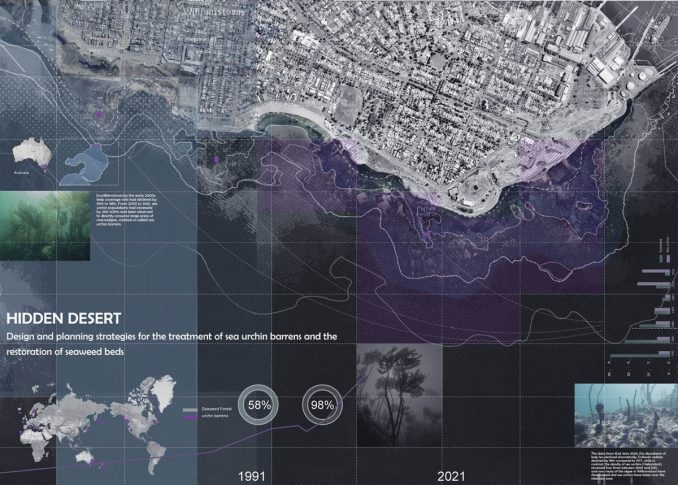
The abundance of seaweeds has been reduced 98% in Port Phillip Bay of central southern Victoria, Australia since 2003, and the number of sea urchins has quadrupled in the last 10 years. Turning the bare seafloor into a desert, which brought major problems and challenges to marine ecosystems and regional economies, and this phenomenon is known as the urchin barren.
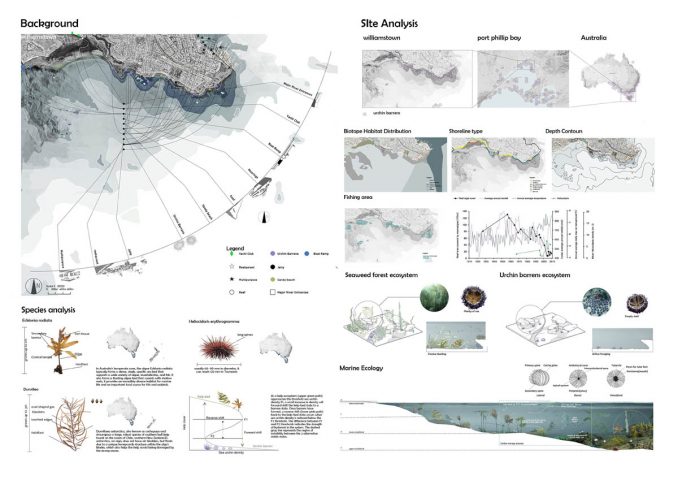
The formation of urchin barren is caused by environmental damage, reduction of natural enemies of sea urchins, and natural disasters like storms, which cause the imbalance between sea urchins and seaweed populations. Followed by the decreasing of the population of seaweed, the biotope is left, until urchin barren is formed, thus affecting the surrounding sea area and forming a vicious cycle.
The urchin barren will affect not only the income of fishermen, but also the local farming, tourism, and service industry and consequently harm the regional economy.
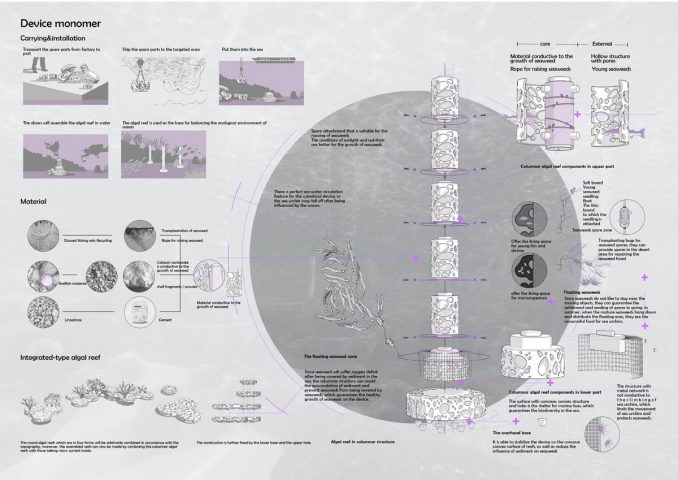
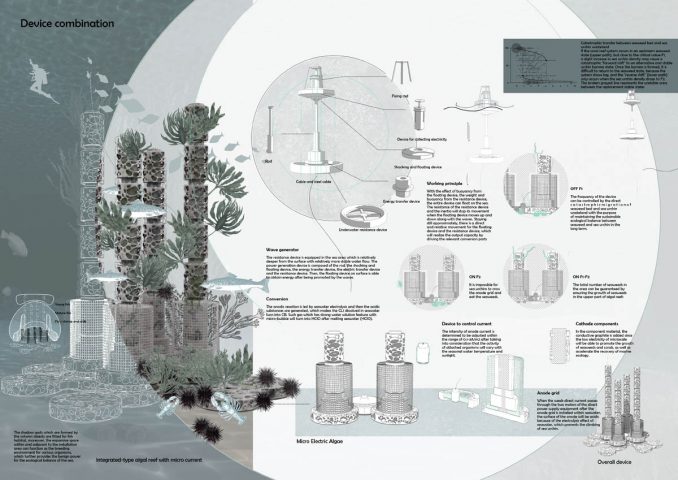
Two types of algae reef devices and small algae reefs were designed to provide seaweed spores and limit sea urchin’s activity to solve the problem of urchin barrens according to the regional marine environment.
Algal reef in columnar structure: mainly used in the reef area of 0-5m water depth. The upper part of the columnar algal reef is equipped with ropes with algae spores. The lower part is equipped with a mesh structure that hard for urchins to climb to protect the growth alga in the upper part.
Micro-electric device algae reef: mainly used in the sandy area of 5-10m water depth, configured with a positive grid to completely limit the urchin climbing, and negative component to transmit weak current into the algae reef so as to promote the growth of alga. The power of the device is provided by the wave power generator at the surface and then reconverted to use.
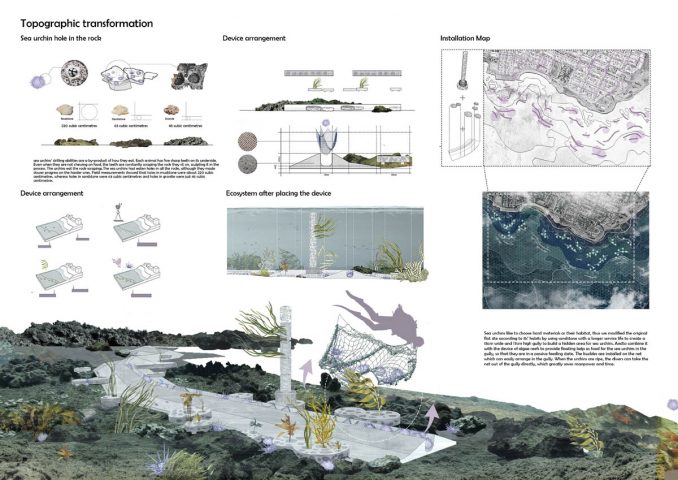
The proposed design modified the original flat site according to its’ habits by using sandstone with a longer service life to create a gully to build a hidden area for sea urchins. And to combine it with the device of algae reefs to provide floating kelp as food for the sea urchins in the gully, so that they are in a passive feeding state. The buckles are installed on the net which can easily arrange in the gully. the divers can take the net out of the gully directly, which greatly saves manpower and time. The net that is full of barren sea urchins collected in the topographic transformation gully is directly taken out and placed in the farm for rearing, and the value will increase 7-10 times after 6-12 weeks. It can also be co-farmed with lobster, abalone, and sea cucumber for more benefits.
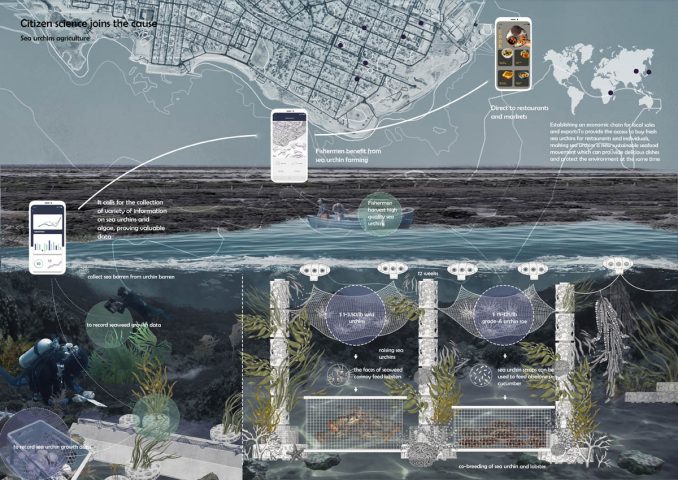
The project explores both environmental interventions and industrial chain shaping, using multiple approaches such as algae reef construction/topographic transformation/industry cooperation to restore the healthy ratio between seaweed beds and urchin barren, in order to reverse the vicious cycle of urchin barrens, promoting the healthy and sustainable development of marine ecology and bringing benefits and vitality to regional communities.
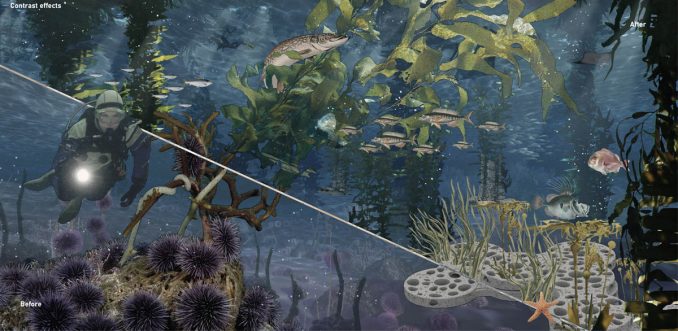
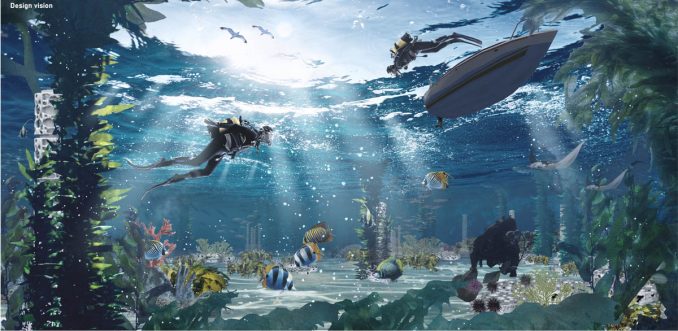
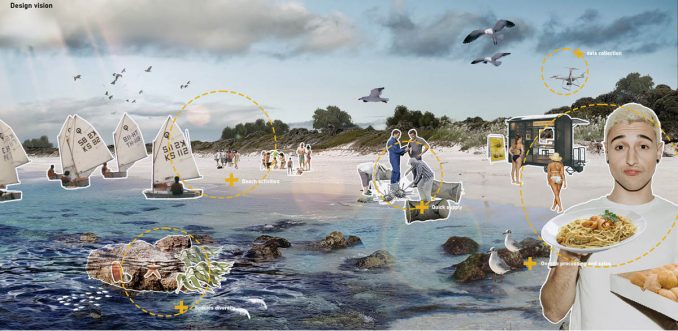
Student Project | Hidden Desert | Jinhan Wang & Ruilin Zhang
Students: Jinhan Wang (RMIT University); Ruilin Zhang (Tokyo University of the Arts)
